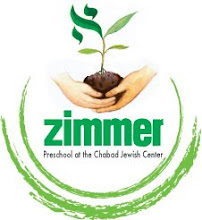The first month of the Jewish year is full of holidays.
From our previous experiences we know that holidays are special days and therefore we need to prepare for this special time and do special things when the holiday is here.
Sukkot is the upcoming holiday and we are getting ready.

We went to visit the big sukkah that is outside our school. The sukkah has walls that go all around. It has a roof that is made from branches that when we look up we could still see the sky.
We were excited to be inside this new place called a sukkah!

We went back to our classroom to make a sukkah where we could play and act out the holiday.
We first measured the area where we were going to build.
We used a very long stick to measure the area and realized we needed a very big piece of paper the size of one stick plus some more.
We got our paper ready and marked off where we need to cut. We ready to make the walls for the sukkah.

A sukkah that we use for the holiday is usually not built from paper. Together we imagined what would happen to our paper sukkah if it was outside and the strong wind would blow or if it would rain.
But for our purpose to have an inside sukkah it would be a great way to make a sukkah.
The children used sticky tape to attach the walls together.
Tape can be tricky to hold and maneuver sometimes getting stuck to itself or our fingers.
It was important for us to try to understand how the tape works.

We were ready to collect branches to use for the roof of the sukkah. Together we went to the beautiful forest behind our school to see what we could find.
There were many branches to find. There were branches on the trees and also some fallen branches on the forest floor. The fallen branches were the most appropriate ones to use since we did not want to disturb or hurt any of the trees.
We found a very large branch- we were curious to see how tall it was. We measured it against our bodies and the Morahs. It was so tall that it was taller than us!

Here are our findings.
We are ready to go back to the classroom to use the branches for our sukkah.

Where is the roof?
It is up.
We tried to reach as high as the roof to place the branches on top.

Now we were ready to make decorations.
We used shiny paper called silver foil to color and then rip to small pieces. This turned out to be a beautiful effect. ripping the silver foil is a great activity to strengthen our little muscles in our fingers. Tearing is also an introduction to understanding the use of scissors.
With our sukkah ready and decorations in place we are ready for the holiday to begin.
song:
tune: London Bridge
Sukkot is a holiday, a holiday, a holiday,
Sukkot is a holiday a special day.
Happy Sukkot
Morah Batsheva





















 Crunch! They crumbled into small pieces. We went outside and caught some leaves that were falling from the tree. What do these leaves feel like?
Crunch! They crumbled into small pieces. We went outside and caught some leaves that were falling from the tree. What do these leaves feel like?



























